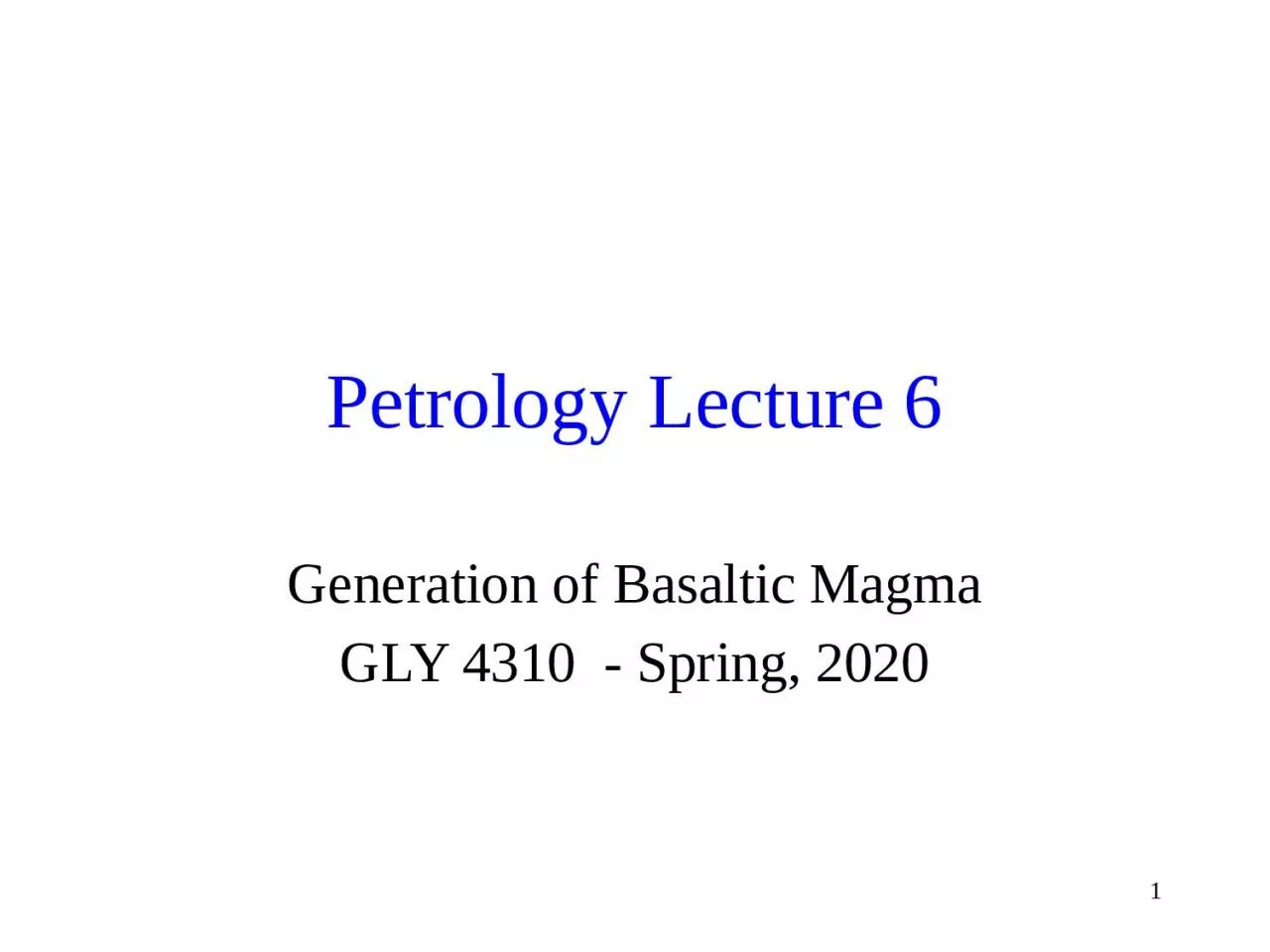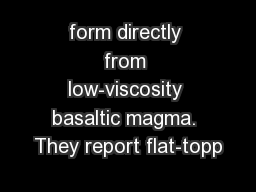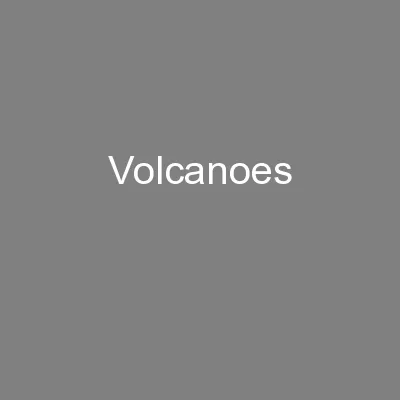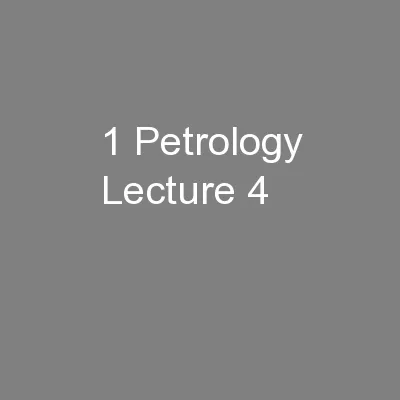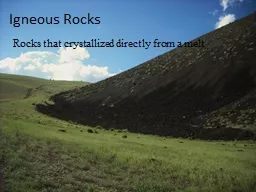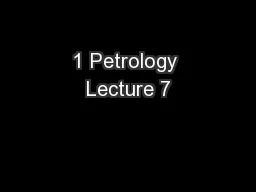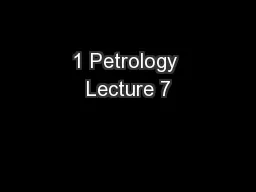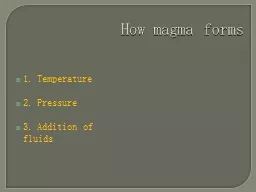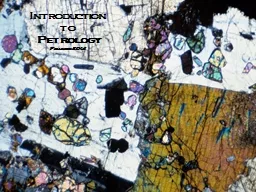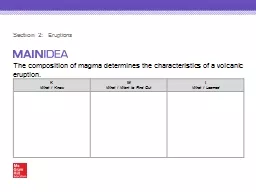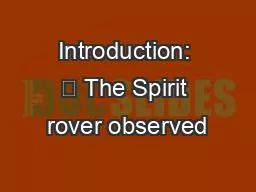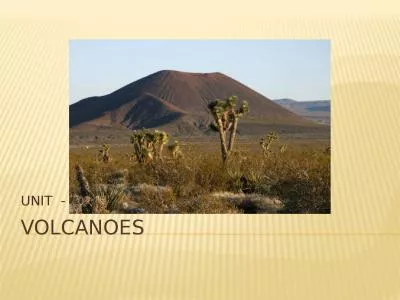PPT-1 Petrology Lecture 6 Generation of Basaltic Magma
Author : emery | Published Date : 2023-09-25
GLY 4310 Spring 2020 2 Magma Series Definition A group of rocks that share some chemical and sometimes mineralogical characteristics They share patterns on chemical
Presentation Embed Code
Download Presentation
Download Presentation The PPT/PDF document "1 Petrology Lecture 6 Generation of Basa..." is the property of its rightful owner. Permission is granted to download and print the materials on this website for personal, non-commercial use only, and to display it on your personal computer provided you do not modify the materials and that you retain all copyright notices contained in the materials. By downloading content from our website, you accept the terms of this agreement.
1 Petrology Lecture 6 Generation of Basaltic Magma: Transcript
Download Rules Of Document
"1 Petrology Lecture 6 Generation of Basaltic Magma"The content belongs to its owner. You may download and print it for personal use, without modification, and keep all copyright notices. By downloading, you agree to these terms.
Related Documents

